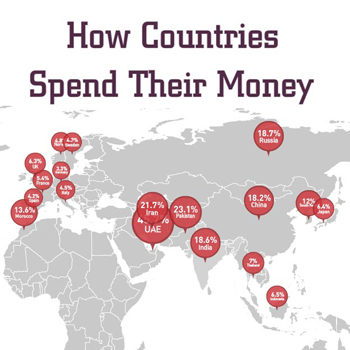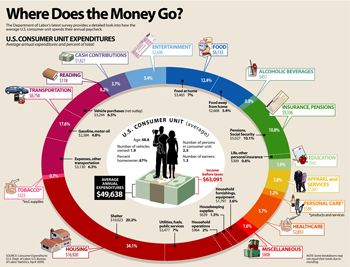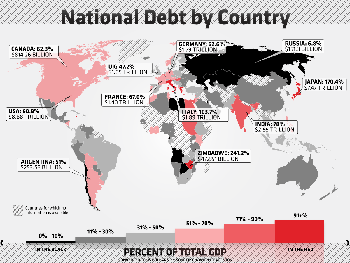HUMAN CONDITION
TERRESTRIAL HEAVEN:
Do humans truly value peace over war? Do humans truly value life over extinction? Do humans truly value consuming things such as education, mutual respect, and decorum over other things such as substance abuse, gunplay, and pornography? What are the true priorities of humans? Will there be a future of Heaven on Earth for humans, or will there be a future of Hell?
As I noted on the "Food for All" page of this website, the human desire to consume goods and services virtually is limitless. There is no limit to the quantity of products humans would consume if those products were available for free. If products were free, most humans probably would opt to live luxuriously and heavenly to the maximum as exemplified in the following videos.
A VIEW OF PERSONAL, NATIONAL, AND GLOBAL PRIORITIES THROUGH PRODUCTION AND CONSUMPTION CHOICES:
Unfortunately, humans live on a finite planet Earth with finite natural resources. The reality of limited natural resources and limitless human desires poses a dilemma: There are not enough natural resources to produce the limitless goods and services that humans desire. As a result, choices have to be made. A determination has to be made about what products to produce with those limited resources, how many to produce of each type of product, and for whom to produce those products.
How is this dilemma resolved? Who makes the decisions about what goods and services to produce and for whom? In a perfect world with perfect competition, this production, allocation, and consumption dilemma is resolved by free markets where the invisible force of supply, demand, and price prevails. If you do not have enough money to pay the price that the market commands for a given product, then you would not be able to consume that particular product. You could not afford to purchase the product. For instance, you might desire owning a Bugatti Veyron vehicle. If you do not have the $2,000,000 it takes to purchase a Bugatti Veyron, then you would have to settle for owning a relatively less expensive vehicle such as a Nissan Leaf. Similarly, because most consumers cannot afford to purchase a Bugatti Veyron, the market shifts those limited resources to the production of the kinds of vehicles that consumers can afford to purchase. (It should be noted that, because humans live in an imperfect world with imperfect economic competition, one role of government is to monitor the economic marketplace to ensure fair play.)
The primary medium of exchange between the buyer (that is, the demander of the desired product) and the seller (that is, the supplier or producer of the desired product) is money albeit, in the 21st century, the electronic fund transfer system of account debits and credits is a popular susbstitute for paper money. Where does the money come from? Money comes from getting an education. Through education, you acquire the knowledge and skills needed to obtain a job, to pursue a vocation or career, or to start a business. Through work, you earn money or checking account credits to buy the products you desire in life. The amount of money or credits you earn also is a function of supply and demand.
The following two graphics illustrate how some countries and USA households have chosen to spend their money.
If you do not have enough money but really wish to consume a given product, then you have to make some choices whether to borrow the money or to save the money required to consume that product. The following two graphics show the extent to which some countries and USA households have used debt instruments or credit to further consumption:
THE HUMAN CONDITION:
Social indicators, economic indicators, and assorted statistical reports provide snapshot views of human life and the human condition at some given point in time (say, for instance, as of the year 2000). The World Bank's World Development Indicators (WDI) and Global Development Finance (GDF) data repository represents one such snapshot view of the human condition at the dawn of the 21st century.
As I mentioned on the Cloud Computing page of this website, there are numerous ways to present interactive data across the World Wide Web. There are even more ways to perform data analyses offline. One popular technique for analyzing data offline is with spreadsheet pivot tables. Another popular technique for analyzing data offline is with traditional relational databases. One of the latest techniques for analyzing data offline is through the use of Business Intelligence (BI) software applications. These Business Intelligence applications, too, are migrating to the "cloud" arena.
The following link presents selected World Bank social and economic indicators to provide a statistical view of the human condition.
The following link provides supporting definitions and documentation for the World Bank's WDI and GDF indicators.
The following links show some of the techniques deployed by others to analyze the World Bank's data:
wwiTV, too, offers a window to the world. wwiTV provides additional insights and perspectives into the human condition at the dawn of the 21st century as does Sir Edward Evans-Pritchard's 20-book volume titled Peoples of the Earth and various gazetteer-related websites.
FLATTER THIS SITE:

SEARCH THIS SITE:
Intellectual Property Disclosures: All videos and songs (as well as many of the images) referenced or spotlighted throughout this website are the legal and intellectual properties of others. All content and opinions on this website (bruessard.com) are those of the author (Edward Bruessard) exclusively and do not necessarily reflect the opinions of the contributors, creators, owners, and distributors of these referenced videos, songs, and images. The author holds no legal interest or financial stake in any of these referenced videos, songs, and images. The contributors, creators, owners, and distributors of these referenced videos, songs, and images played no role at all regarding the appearance of said videos, songs, and images throughout this website; they had no clue that this website would be spotlighting their works.






